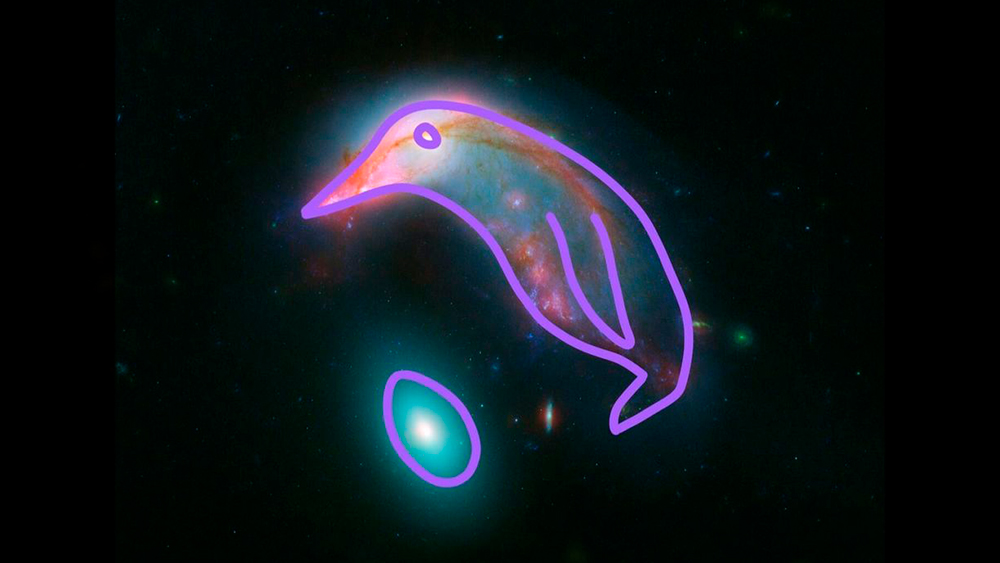
We've seen all manner of optical illusions over the years, from human-looking dogs to rotating horses. Just when it feels like we've seen them all, a stunning accidental illusion crops up in space, discovered by none other than NASA.
The space agency took to Instagram to share an image captured by the Hubble and Spitzer space telescopes of a collection of galaxies known as Arp 142. It noted that two of the galaxies bear "an uncanny resemblance to a penguin guarding an egg" (see our pick of the best optical illusions for more mind benders).
The galaxies in question are extremely distant at 23 million light-years from Earth in fact. That's 10 times further away than the Andromeda galaxy. The penguin, whose official name is the less entertaining NGC 2936, is a spiral galaxy contorted by its neighbour, NGC 2937.
The combination of new stars and gas strands make the distortion of the galaxy clearly visible, while the egg comprises old stars smoothly distributed, hiding any shaping caused by its neighbour. NASA says that gravity will gradually bring the two galaxies closer together until they merge.
The image was produced by combing light from the two telescopes. New stars, which appear bluish, were captured by the Hubble telescope, while the longer infrared wavelengths of dust and gas strands, which appear red, were captured by the Spitzer telescope. “Combining light from across the visible and infrared spectrums helps astronomers piece together the complex story of the life cycles of galaxies,” NASA’s Jet Propulsion Laboratory said.
I'm not sure if the penguin and egg names will catch on, but they're certainly more catchy than the official titles for the galaxies, and the amusing illusion is likely to draw interest to NASA's work. Some people in the comments on Instagram are suggesting that NASA has a vivid imagination, while some wonder which came first, the penguin galaxy or the egg. For more recent gems, see the dogs optical illusion that left us stumped.







